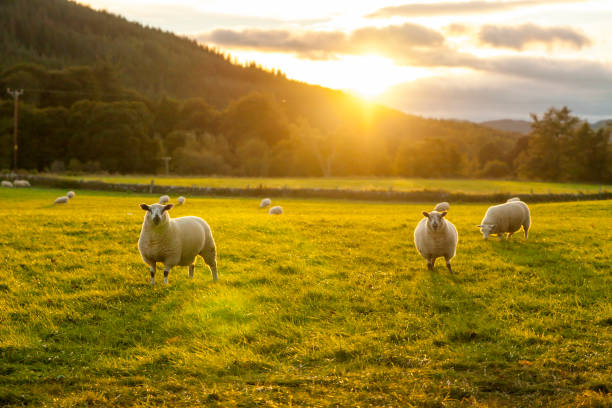Eye Conditions of Adult Sheep
14 January 2021
There are three main eye conditions of the ewe, all of which can be associated with harsh winter weather and housing of ewes. The most common condition is Infectious Keratoconjunctivitis, more commonly called “pink eye” or “snow blindness”. This is often related to bad weather such as driving snow or high winds but also dust which may be in hay. It is a contagious condition, caused by one of two species, either Chlamydia Psittaci or Mycoplasma Conjunctivae. It can be identified as, tear stains on the face, cloudy eyes, a dislike to bright lights and/or an inflamed pink eye depending on the length of infection. There are often carrier animals within flocks which transmit the organisms to other sheep in the flock. Close contact at troughs allow the infection to spread rapidly. To limit infection sheep must have adequate trough space (45 cm/head for troughs and 15 cm/head for ring feeders), not be highly stocked and sheds should be well ventilated, in addition shelter should be provided for out wintered stock. Purchased stock must be isolated until it is apparent if they are affected by the condition.
Anterior Uveitis is a condition often linked to feeding big bale silage to sheep. This is a conjunctival infection from Listeria Monocytogenes. Signs of infection include cloudy eyes in sheep. To limit the risk of the condition, big bale silage should be offered to the animals fresh and not allowed to be opened from the wrap for more than 3 days. The condition is more common when sheep are pushing their heads into the bale. Unrolling bales along a feed barrier is likely to reduce the risk of disease compared with using a round feeder.
The final condition is Periorbital Eczema. This condition occurs when the skin around the eye is damaged allowing for entry of Staphylococcus aureus. This can often occur when there is not adequate room allowed for at troughs or ring feeders. It results in swollen eyes and blocked vision due to large scabby lesions forming around the eyes.
Eye conditions are particularly problematic disorders for ewes in late pregnancy, where an eye condition can lead to blindness. This can make it difficult to source food, resulting in metabolic disorders, loss of body condition and low milk yield. The conditions listed above can carry a high economic cost to sheep farms in terms of low performance or death of the ewe through metabolic disorders, foetal losses, poor weight gain in ewes and lambs and the labour cost to deal with such conditions. Simple prevention through biosecurity, ensuring adequate feed space, shelter and ventilation can reduce the risk on farm.
Kirsten Williams, kirsten.williams@sac.co.uk
Sign up to the FAS newsletter
Receive updates on news, events and publications from Scotland’s Farm Advisory Service

